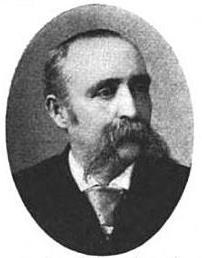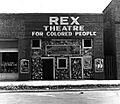Leland, Mississippi facts for kids
Quick facts for kids
Leland, Mississippi
|
|
|---|---|
| City of Leland | |
| Country | |
| State | |
| County | Washington |
| Settled | 1834 |
| Incorporated | February 20, 1886 |
| Founded by | Captain James Alexander Ventress Feltus (1840–1908) |
| Government | |
| • Type | Mayor–Council |
| Area | |
| • Total | 3.63 sq mi (9.41 km2) |
| • Land | 3.58 sq mi (9.28 km2) |
| • Water | 0.05 sq mi (0.13 km2) |
| Elevation | 121 ft (37 m) |
| Population
(2020)
|
|
| • Total | 3,988 |
| • Density | 1,113.03/sq mi (429.70/km2) |
| Time zone | UTC-6 (Central (CST)) |
| • Summer (DST) | UTC-5 (CDT) |
| ZIP code |
38756
|
| Area code(s) | 662 |
| FIPS code | 28-40280 |
| GNIS feature ID | 2404910 |
Leland is a city in Washington County, Mississippi, United States. It's located in the Mississippi Delta region, right on the banks of Deer Creek. In 2020, about 3,988 people lived there.
Leland used to be a busy railway town. It was also a big center for growing cotton, which is still an important crop in the area. In 1920, it was even considered the second-largest city in Washington County because it grew so quickly.
Farming has been a key part of Leland's economy for a very long time. Many farms are located in and around the city. Important agricultural research happens nearby at Stoneville. This research is done by Mississippi State University and the United States Department of Agriculture (USDA). Farmers in the area mainly grow cotton, soybeans, rice, and corn. Raising catfish is also a big business here.
Leland is famous for its connection to blues music. Many well-known blues musicians come from this small town. You can find five special markers from the Mississippi Blues Trail in Leland. These markers celebrate the city's important role in blues history. Highway 61, a road often mentioned in blues songs, runs through Leland. The city's blues museum is even named after this highway.
The folk artist and blues musician James "Son" Thomas is buried in Leland. He lived near the railroad tracks for many years. Another blues musician, Johnny Winter, spent part of his childhood in Leland. His family owned a cotton business there. One of the Blues Trail markers is dedicated to Johnny Winter.
Leland is also special because it's where puppeteer Jim Henson grew up. He was born in nearby Greenville, but he spent his childhood in Leland. Here, he created Kermit the Frog, one of his famous Muppet characters. The city has a museum called the Jim Henson Exhibit. It's located along Deer Creek and celebrates his amazing work.
In 2016, the Mississippi Wildlife Heritage Museum opened in Leland. It's a great place to learn about the state's wildlife.
Template:TOC limit=3
Contents
History of Leland
Early Settlement and Founding (1800s)
The land where Leland now stands was once part of the Choctaw territory in the early 1800s. After a treaty in 1820, the land became part of the United States.
The first settlers arrived in 1834. These families, including Samuel and Susan Jones, built their homes on the banks of Deer Creek. They lived on a place called the Three Oaks Plantation. More settlers soon came to Leland and the nearby Stoneville area. People used boats on Deer Creek to travel between the two places. A drawbridge was even built to connect them better.
Later, the land was sold to Captain James Alexander Ventress Feltus in 1876. He bought about 900 acres. Captain Feltus built his home at "Three Oaks." He also gave land for a railroad to be built. The railroad, called the Louisville, New Orleans and Texas Railroad Company, finally arrived in 1885. Leland was considered an important stop for several railroad lines.
Captain Feltus officially created the town of Leland. He signed deeds that set up streets from First to Eighth Streets, including Main and Broad Streets. People say he named the town after Miss Leland McCutcheon. She was the mother of his friend, Ruben Armstrong. The first store in Leland was Greenley's Mens Store.
Becoming an Official City (1886)
In January 1886, the people of Leland asked the state to make their town an official city. Their request was approved on February 20, 1886. This made Leland a recognized city.
As the city grew, it started its first newspaper, The Leland Record. Many new businesses also opened. These included stores, banks, law firms, and more.
Geography and Climate
Leland's Location and Size
Leland covers about 2.1 square miles (5.4 square kilometers). Most of this area is land, with a small part being water.
Weather in Leland
Leland has a climate with warm summers and mild winters. Here's a look at the average temperatures and rainfall:
| Climate data for Leland, Mississippi (Stoneville Experiment Station) (1991–2020 normals, extremes 1930–present) | |||||||||||||
|---|---|---|---|---|---|---|---|---|---|---|---|---|---|
| Month | Jan | Feb | Mar | Apr | May | Jun | Jul | Aug | Sep | Oct | Nov | Dec | Year |
| Record high °F (°C) | 82 (28) |
83 (28) |
90 (32) |
94 (34) |
100 (38) |
105 (41) |
109 (43) |
106 (41) |
104 (40) |
96 (36) |
89 (32) |
83 (28) |
109 (43) |
| Mean daily maximum °F (°C) | 52.6 (11.4) |
57.3 (14.1) |
65.9 (18.8) |
75.4 (24.1) |
83.7 (28.7) |
89.8 (32.1) |
92.1 (33.4) |
92.5 (33.6) |
88.2 (31.2) |
77.7 (25.4) |
65.1 (18.4) |
55.4 (13.0) |
74.6 (23.7) |
| Daily mean °F (°C) | 43.4 (6.3) |
47.4 (8.6) |
55.4 (13.0) |
64.6 (18.1) |
73.5 (23.1) |
80.1 (26.7) |
82.4 (28.0) |
81.7 (27.6) |
76.4 (24.7) |
65.5 (18.6) |
54.2 (12.3) |
46.2 (7.9) |
64.2 (17.9) |
| Mean daily minimum °F (°C) | 34.3 (1.3) |
37.6 (3.1) |
44.9 (7.2) |
53.8 (12.1) |
63.4 (17.4) |
70.4 (21.3) |
72.7 (22.6) |
70.9 (21.6) |
64.6 (18.1) |
53.3 (11.8) |
43.3 (6.3) |
37.1 (2.8) |
53.9 (12.2) |
| Record low °F (°C) | −5 (−21) |
−5 (−21) |
13 (−11) |
29 (−2) |
40 (4) |
47 (8) |
54 (12) |
51 (11) |
36 (2) |
25 (−4) |
15 (−9) |
1 (−17) |
−5 (−21) |
| Average precipitation inches (mm) | 5.55 (141) |
5.59 (142) |
5.41 (137) |
6.05 (154) |
4.84 (123) |
4.07 (103) |
4.01 (102) |
3.12 (79) |
3.51 (89) |
4.18 (106) |
4.49 (114) |
5.25 (133) |
56.07 (1,424) |
| Average snowfall inches (cm) | 0.2 (0.51) |
0.2 (0.51) |
0.0 (0.0) |
0.0 (0.0) |
0.0 (0.0) |
0.0 (0.0) |
0.0 (0.0) |
0.0 (0.0) |
0.0 (0.0) |
0.0 (0.0) |
0.0 (0.0) |
0.0 (0.0) |
0.4 (1.0) |
| Average precipitation days (≥ 0.01 in) | 11.5 | 10.2 | 11.0 | 9.8 | 10.1 | 7.9 | 9.3 | 7.6 | 7.2 | 7.2 | 8.6 | 11.3 | 111.7 |
| Average snowy days (≥ 0.1 in) | 0.2 | 0.1 | 0.0 | 0.0 | 0.0 | 0.0 | 0.0 | 0.0 | 0.0 | 0.0 | 0.0 | 0.0 | 0.3 |
| Source: NOAA | |||||||||||||
People of Leland
Population Changes Over Time
The number of people living in Leland has changed over the years. Here's how the population has grown and shrunk:
| Historical population | |||
|---|---|---|---|
| Census | Pop. | %± | |
| 1890 | 485 | — | |
| 1900 | 762 | 57.1% | |
| 1910 | 1,547 | 103.0% | |
| 1920 | 2,003 | 29.5% | |
| 1930 | 2,426 | 21.1% | |
| 1940 | 3,700 | 52.5% | |
| 1950 | 4,736 | 28.0% | |
| 1960 | 6,295 | 32.9% | |
| 1970 | 6,000 | −4.7% | |
| 1980 | 6,667 | 11.1% | |
| 1990 | 6,366 | −4.5% | |
| 2000 | 5,502 | −13.6% | |
| 2010 | 4,481 | −18.6% | |
| 2020 | 3,988 | −11.0% | |
| U.S. Decennial Census | |||
Leland's Population in 2020
In 2020, there were 3,988 people living in Leland. These people lived in 1,642 households, with 1,032 of them being families.
Here's a quick look at the different groups of people living in Leland in 2020:
| Group | Number | Percentage |
|---|---|---|
| White | 1,384 | 34.72% |
| Black or African American | 2,448 | 61.39% |
| Native American | 1 | 0.03% |
| Asian | 17 | 0.43% |
| Other/Mixed | 97 | 2.43% |
| Hispanic or Latino | 36 | 0.9% |
Arts and Culture in Leland
Fun Places to Visit
Leland has several interesting places to explore:
- Mississippi Blues Trail Markers: These markers tell the stories of famous blues musicians and important blues history in Leland.
- Mississippi Wildlife Heritage Museum: Learn all about the animals and nature of Mississippi.
- Jim Henson Exhibit: Discover the world of Jim Henson, the creator of the Muppets, who grew up here.
- The Thompson House: A historic Bed and Breakfast that is a beautiful old building.
Education in Leland
The Leland School District serves the students in Leland. The city has one high school, Leland High School. There is also one middle school, Leland School Park, and one elementary school, Edna M. Scott Elementary.
Media in Leland
The local newspaper in Leland is called The Leland Progress. In the past, there were other newspapers like The Leland Record (started in 1886) and The Leland Enterprise (started in 1901).
Famous People from Leland
Many talented people have connections to Leland:
- Douglas A. Blackmon: A writer who won a Pulitzer Prize for his book Slavery by Another Name. He grew up in Leland.
- Johnie Cooks: A football player who played for Mississippi State University and in the NFL.
- Jim Henson: The famous puppeteer who created The Muppets. He spent his childhood in Leland.
- Thelma Houston: A singer and actress who was born in Leland.
- Antonio Johnson: A professional football player.
- Matt Miller: A former Major League baseball pitcher.
- Wadada Leo Smith: A jazz trumpeter and composer from Leland.
- Bob Taylor: A baseball player.
- James "Son" Thomas: A blues musician, gravedigger, and sculptor.
- Johnny Winter: A blues musician who spent part of his childhood in Leland.
Images for kids
-
Rex Theatre for Colored People in Leland, 1937, by Dorothea Lange
See also
 In Spanish: Leland (Misisipi) para niños
In Spanish: Leland (Misisipi) para niños








